Scales of Sentiment: 1992 Virginia and Rubin’s Vase
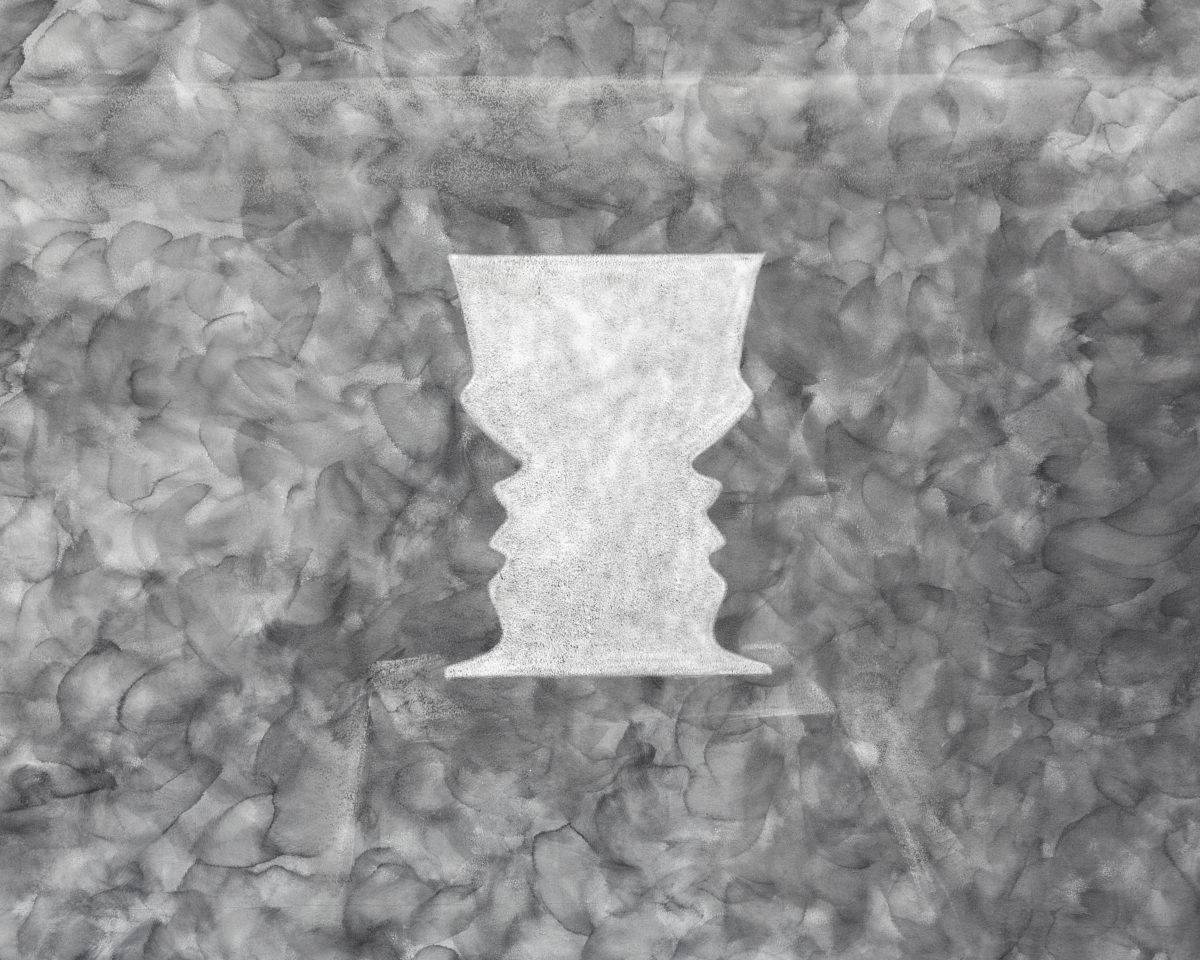
Studio Pedagogy Writing Studio Pedagogy Writing Photos by Guanyu Xu Scales of Sentiment: 1992 Virginia and Rubin’s Vase February 11–April 10, 2022 Mana Contemporary ChicagoChicago, IL “Mind Map” is a bi-monthly program, curated by S.Y. Lim, that invites Chicago-based artists to create a time-based and site-specific work that shows the artists’ processes. Mind map looks into the artist’s creative process. With graphite, artists are invited to work on the wall located inside the cafe, reflecting their ideas for two weeks. The exhibition lasts for a month and a half. Scales of Sentiment: 1992 Virginia and Rubin’s Vase, centers around sediment and sentiment as forms of composition that entail an accumulation of history and feeling. A layer of graphite covers the wall, much as sediment is deposited across the earth before being compacted over millions of years into sedimentary rock. Through these rocks’ layer boundaries, we can sense pressure accumulated through time. Sentiment is similar: time becomes a pressure cooker for nostalgia, layered into the media through which we emote. Together these two points of composition alter what can be deciphered as foreground, background, and underground–not just of landscapes but of layered beliefs about social and environmental realities. for “Mind Map” I take Sally Mann’s photograph Untitled, from Motherland: Virginia Series,1992, and the illusion of Rubin’s vase as reference points while utilizing a mark-making strategy of accumulation and erasure. the work stems from ongoing studio research into my familial connection to the American South, using sally mann as a proxy for her white mother, as well as recent research into geology and a visit to the iconic double negative by Michael Heizer. Typical to my practice, this work is a constellation of ideas, but a-typically this map emerges through drawing rather than sculpture and social space.
U T E N S I L
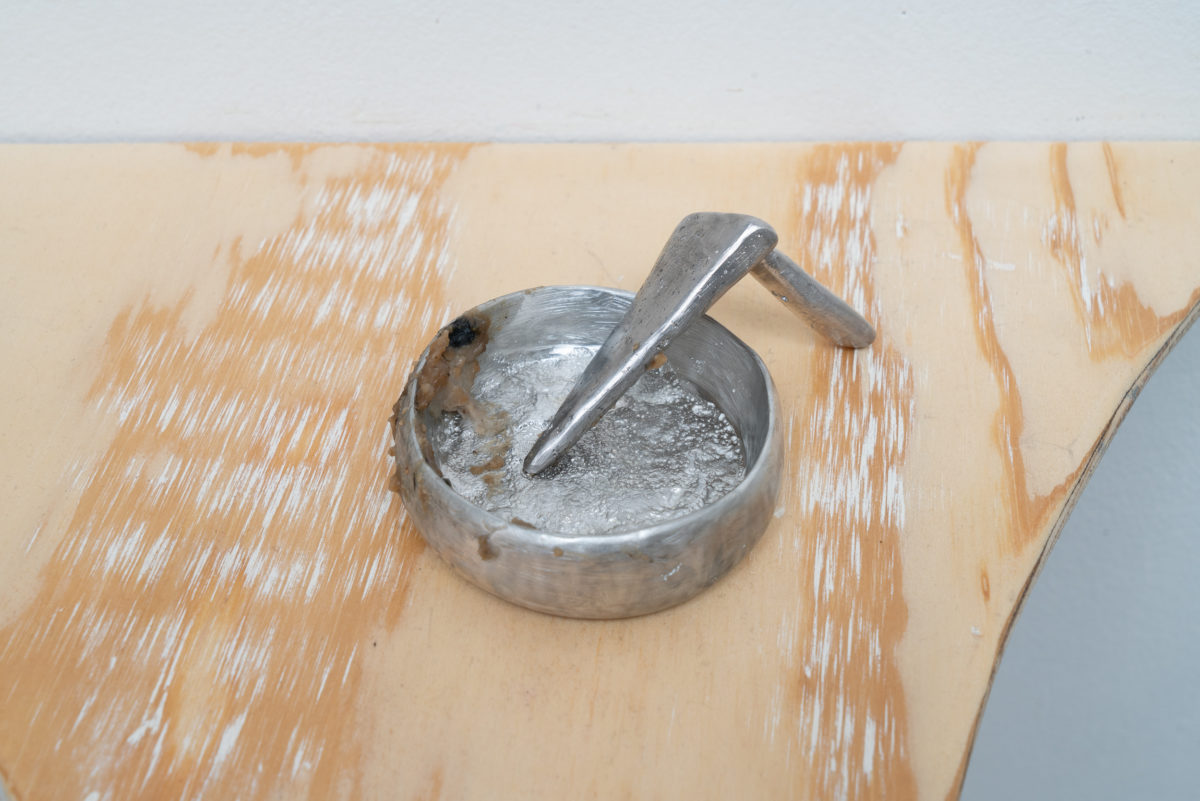
Studio Pedagogy Writing Studio Pedagogy Writing Exhibition Utensil Comfort Station, Chicago IL November 6 – December 5, 2021 The work continues the collective and prompted efforts of Alden Burke, Caroline Dahlberg, Mariel Harari, Azalea Henderson, Stephanie Koch, and Maggie Wong. – What is a prompt? A prompt is an invitation to ease into entanglements, a generous permission to act, a container to explore a stretch in thought, a resurrected memory. A prompt is an instruction. A prompt as a transition, bringing us to another space, another other, another self. A prompt as a thought experiment, as sensorial vibrancy, as a meeting of the unexpected. A stretch in thought, the resurrected memory. A prompt also asks: What is at stake, what tools are needed for vulnerability? A prompt can move us. Find a utensil—trace the lengths of your arms; ask someone to trace the length of your arms; ask if you can trace the length of theirs; offer to trace them into the sky; ask if they might do the same for you. A prompt contains self-reflection. Always around the corner is a world of people outside with which to build our collaboration. In becoming research, when we build from prompts, when we work from our conditions, how do we share and reperform with an audience? What are the limits? –Annas Press Review of UTENSIL: Annas’ Exhibition at Comfort Station, By Ally Fouts for Sixty Inches from Center, February 2022.
I made us a paperweight; I am now on chapter 2 (fragments 2 – 5)
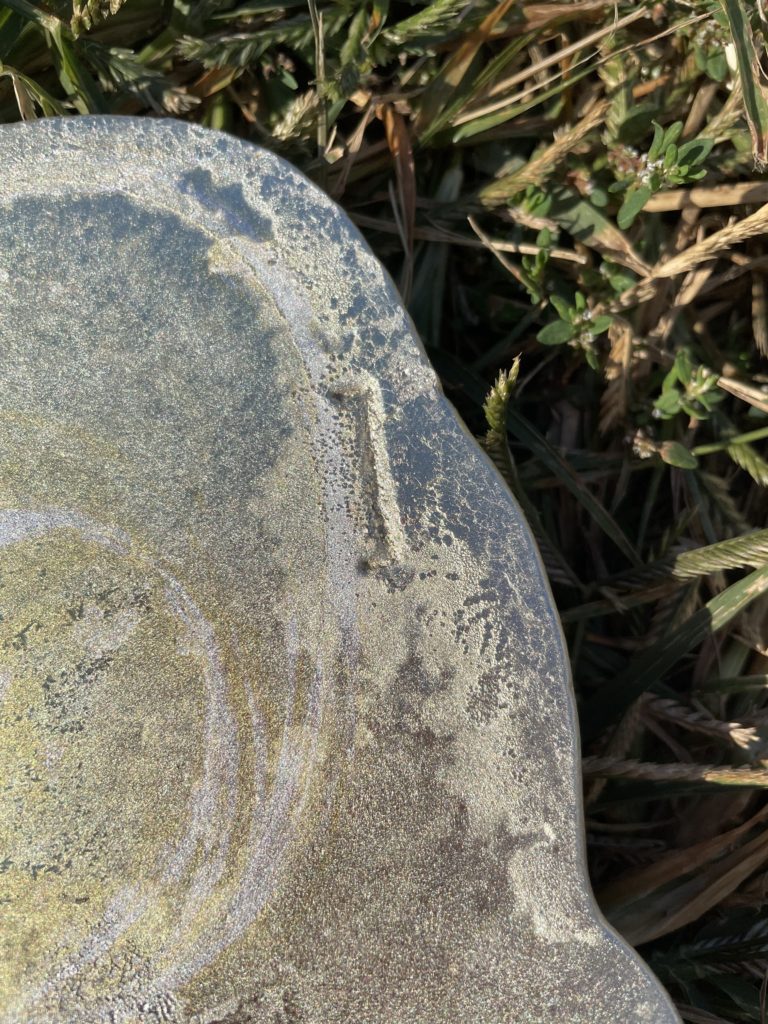
cast pewter (buried granite, quartz, brick, and ceramic), laser printed booklet, wooden lectern. Created for the Terrain Biennial, Chicagoland, 2021 I made us a paperweight; I am now on chapter 2 (fragments 2 – 5) is a series of reproductions of my mother’s marginalia in Frantz Fanon’s text The Wretched of the Earth: the handbook for the black revolution that is changing the shape of the world, specifically the chapter “Concerning Violence.” These little pools of hard metal hold faint traces of x marks, underlines, and hand-drawn brackets but none of the original writing. Each metal piece shows a fragment of the pages and is anchored into the yard with geologic material. The work plays at the edge of what is known, communicates, and even holds communicability. The weights play with creating marginalia, which is to play at a boundary of a text, mind, materiality, ideology, or even bodily presence. Extracting marginalia in I made us a paperweight; highlights a maternal bind and reproductive structures of knowledge production, power, ownership, inheritance, and land. This work is an ongoing engagement with a study of impressions left by objects. Thank you to Pam and Bart Eisfelder for their yard and hospitality.
FOR MEDIUM
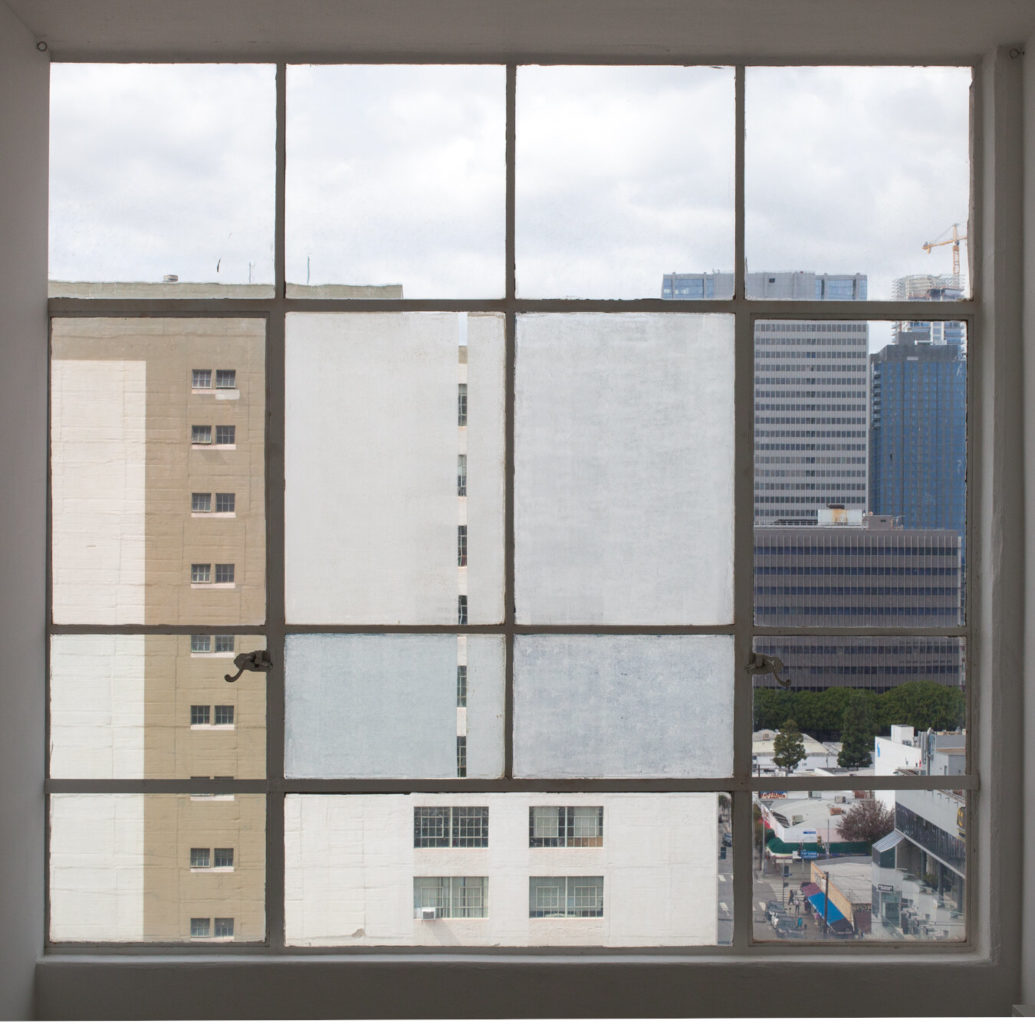
Studio Pedagogy Writing Studio Pedagogy Writing Exhibition (selected works) Medium David Sprecher, Bill Wells, Maggie Wong March 14th, 2020 — July 10th, 2021 take care Los Angeles, CA How to get close without eliminating distance? Is this what our technology aspires to? Perhaps it is that our everyday language is abstract, more so than it is given credit for—both too small and too large to pin down specificity. Descriptions slip in time and are tested against the concrete, where they settle on approximation. Within the space of play we find a familiar and specific feeling. A medium of engagement. A call and response from a form of action that resonates in rhythms and rhymes. When presence and absence become one and the same, the field is folded, and form becomes that which inhabits it. It’s there that a mold is made. A mode of production. In this space, to stop making sense is to sense what is made, both for and with one another. – Molly and Brendan Getz
Close To You
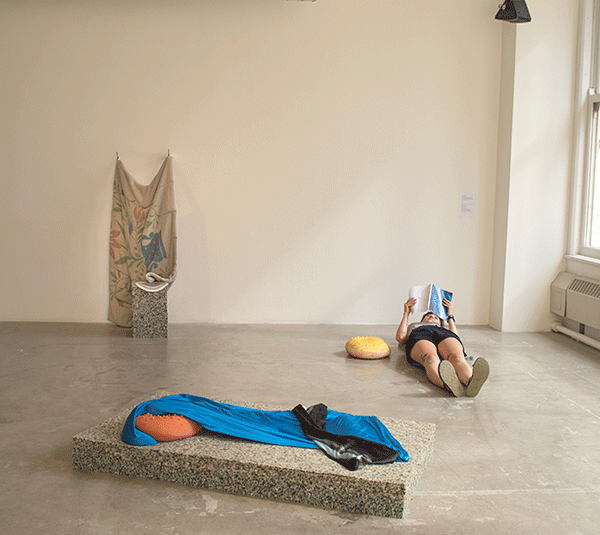
Studio Pedagogy Writing Studio Pedagogy Writing Play the record: Close To You, 2018 Link to performance lecture script – The song “They Long to Be Close to You” was written by songwriters Burt Bacharach and Hal David in 1963, but made famous in 1970 by the Carpenters. Since its creation, the song has been recorded and performed countless times. The sentimental schlocky lyrics and intonations have been absorbed and adapted by performers across genres. Carpenters, Isaac Hayes, Diana Ross, Richard Chamberlain there is even a punk version by the Circle Jerks which did not make it into this piece. The coverability of the song in a sense makes it a poor, low-brow node of culture that is highly shareable and fluid, like how Hito Steyerl speaks of the poor image which is a low grade .jpeg that gets compressed and loses resolution via its digital circulation. The shareability of a piece culture communicates the sentiment recorded into our objects. These other objects? They come from Sensory Integration Therapy which seeks to help those with sensory overstimulation disorder or people on the Autism spectrum. Sensory integration objects are designed to reduce the need for stimming out, such as flapping one’s hands, hitting, spinning, humming, and repeating a word or phrase. These actions overcompensating for sensory overload or disorientation. Alongside therapeutic intervention, they are designed to allow a person to interpret the world through differentiating sensorial inputs. So a weighted blanket, for example, weeds out a need for self-stimulatory behavior for the sake of integrating into an implicit social norm for neurological function and participation. The objects here attempt to settle an overwhelming feeling that comes out of the song communicating beyond its semantic sentiment, becoming disjointed and incoherent. The song itself is stemming and these objects are piecing the social-emotional world together largely devoid of human touch. This is a world of partial objects trying to becoming a whole permanent object. Close to You presents a depressive position in that pieces of sentimental culture, in its riffs, refrains, objects meant to partition feeling all work to individuate a person. These pieces are meant to facilitate being in and of the social western world, through a contradictory phenomenon of never having full access, be that reflected in the piecemeal sound, or spread out sculptural display. From here we can swoon in an inside-out twist and shout of how mediation can be the means to be merely close.
Coloring Room
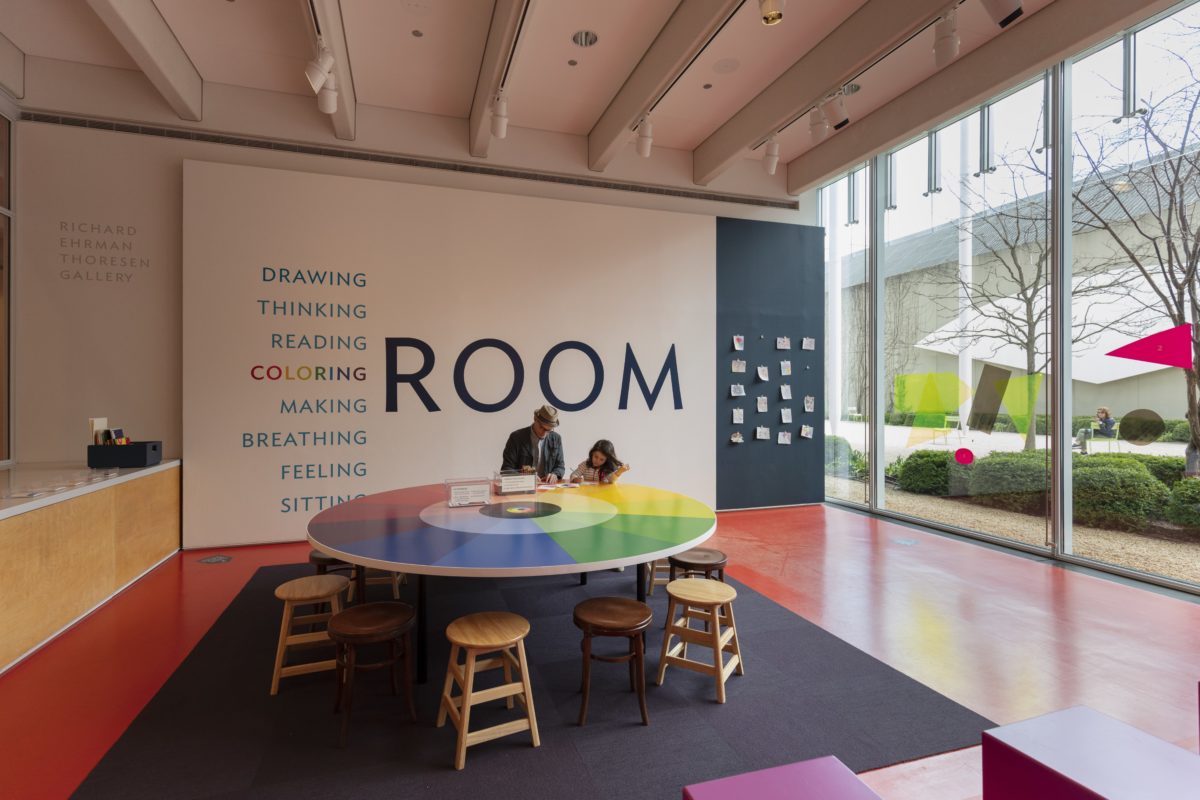
An interactive exhibition and Museum Educator Graduate Scholars project at The Art Institute of Chicago. How can sensory focused experiences expand visitors’ sense of belonging and participation in an art institution? My objective was to build a methodology for creating interactive, unfacilitated, informal learning environments in the Art Institute of Chicago’s Interactive Gallery. “Coloring Room” was the third in a series of pop-up exhibitions designed for multi-modal and collaborative play between both families and strangers. Museum educators used the pop-up exhibitions as platforms to evaluate the visitor engagement with art concepts, the museum’s collection, and interpersonal skills in the museum. Evaluations were a self-reflective practice on how the museum serves its audience. In light of this, I looked to Katherine Kuh, an AIC educator and curator between 1944-1959, and her interactions with pedagogically minded artists and architects such as Mies Van der Rohe and Josef Albers. Alber’s text Interaction of Colors became the basis for Coloring Room activities and underlying principles. Broadly, color theory acted as a conceit to generate qualities of difference via perception and social interaction. Thank you to Mary Erbach, Robin Schnur, Nenette Luarca-Shoaf, Kerri Callahan, and Juneer Kibria Illustration of “Coloring Room” by visitor Clementine Luarca – Shoaf, age five Gallery of Art Interpretation Katherine Kuh Exhibitions “Explaining Abstract Art” and “Line, Shape, and Form” Addressing Accessibility Coloring Room: a social story A social story is a narrative device used for autistic visitors to help anticipate their visit. However, a social story works for anyone. Included in the following guide is a visual checklist, and other materials into a guide for “Coloring Room. Cognitive “pre-play” as studied in neurology shows that it’s a common occurrence for brains to make a “horizon of expectations” before an event. Managing expectations is a strategy taken up by the museum at large through messaging from departments spanning across the institution – from education to development. The goal is for museum-goers to find practical access and emotional belonging to concepts, histories, artworks, spaces, and communities that the museum gathers. Click to read the social story.
MAKING OUT
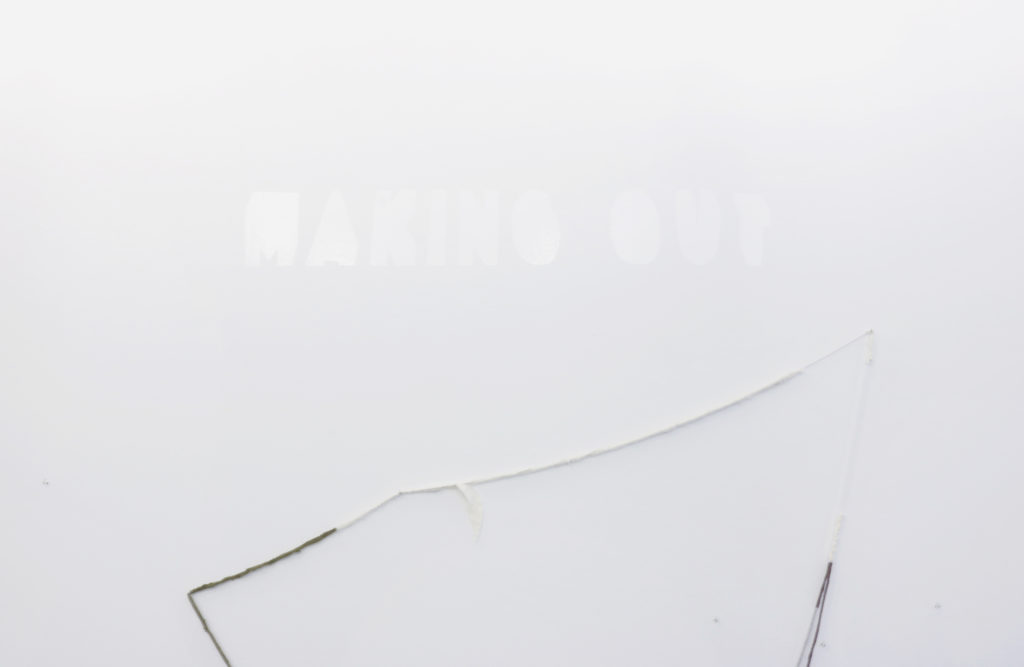
Studio Pedagogy Writing Studio Pedagogy Writing Making Out October 2017 SITE Sharp, 37 S Wabash, Chicago IL Press Release MAKING OUT turns the SITE gallery into a space of playful resistance. The work will center around a large installation of bleachers that suggest a high school football field — the kind of bleachers that provide a refuge for clandestine kissing. Making Out fosters radical imagination by constructing a particular, touchable, sometimes functional site for envisioning tenderness. This show is a collaboration by a group of artists known as HIVE. The work is a site of negotiation between power and intimacy. It aims to clarify the question of whether tenderness can resist and alter systemic power structures. This work encourages and explores the practice of making out in the context of institutional subjugation. HIVE intends to remain hopeful via this exploration. HIVE intends, at every step, to acknowledge the possibility that if we keep kissing, we may alter the conditions of our subjugation. At the same time, paradoxically, we humbly acknowledge our helplessness in the face of power: we make out all the same. Several programs and happenings will take place as we explore these ideas with the gallery’s visitors. Some programs take place under the refuge of the bleachers. Some will be available to stream online, as this show is both local and dispersed. In addition to the bleachers, this show includes interactive sound and touch installations, as well as a limited quantity of free zines. Making Out is the first exhibition in SITE Galleries by students in SAIC’s Low-Residency MFA program, which was established in 2014. It is a joint effort by HIVE, a group comprised of class of 2018 Low-Residency students Maggie Wong, Nancy Murphy-Spicer, Morris Fox, Morgan Green, Brendan Getz, and C Alex Clark. We are grateful to the faculty, loved-ones, and remote collaborators who join us in this work. Program OCTOBER 11 — Kissin’ and Kiss-in 4:00 PM Kiss-In We encourage those who are curious about affectionate touch as a form of resistance to attend this event. We will model methods of consent before practicing them through kissing. Participants can kiss in whatever way they are comfortable: on the hand, on the cheek, or more intimately. Here we actively support careful touch, tenderness and communication. Participants may also choose at any time to watch, rather than participate. This action is a sincere and hopeful attempt to evaluate the gallery’s potential as a space of resistance, of inclusion rather than exclusion. It looks to the 90s kiss-ins staged by ACT UP, an AIDS direct action advocacy group. These kiss-ins were meant to combat homophobia and subsequent apathy towards the AIDS crisis. They challenged repressive conventions by publicly affirming queer feeling and desire. Our action takes these tactics, which have been historically effective in the street, and enacts them in the space of the gallery — in the shelter we have built there. We are using these tactics in this case to build notions of empowerment through intimacy, and to fortify tools of consent. We hope that this action serves both as a way to try something new and as a way to honor history. *** Due to the institution’s concerns with health and safety, Hive respectfully altered the program to eliminate participatory kissing. Instead, we modeled our forms of consent that we planned and facilitated a discussion around consent with the event attendees. We feel that the alteration still does not completely fulfill the mission of the intended KIss-In and are looking to see it through in another setting. 5:00 PM, We Won’t Get Bored Kissing Because Time Will Be a Mobius Strip In this lecture, Morgan Green will seriously consider alternative conceptions of time as tools of resistance. She will draw from queer theory and popular media as she clumsily attempts to simulate (pedagogically) the experience of making out forever. A supplementary zine will distributed after the talk. OCTOBER 18 — Digitally Intimate Maggie Wong, MC 4:00 PM Bedsheet Poetry Readings A series of video-cast poetry readings curated by C Alex Clark, who will Skype in to introduce poets, Katie Johnson (Sante Fe, NM) and Bailey Schaumberg (St. Louis, MO). 5:00 PM Drive-In / Kiss-In Movie 1. High School (1968) – Frederick Wisemanfrom min 1:01:49 – 1:10:102. Confrontation: Paris, 1968 – Seymour Drescher min 31:53 to end3. Act Up Chicago “Kiss In” April 1990 (2 min)4. Fast Trip, Long Drop, Greg Bordowitz until min 7:19 “I’m fired up I am kissing everybody!”5. Thumb War – A.K. Burns, 3 min6. Touch Parade – A.K Burns, 9 minAll films are in the public domain and screened via You Tube, Ubu Web, and Vimeo. OCTOBER 25 — Artist Talk with Sarah Schulman For this lunch time talk Hive and the School of the Art Institute’s Visiting Artist Program, and SITE hosted artist, writer, and activist Sarah Schulman under the bleachers. Facilitated by Maggie Wong, the conversation focused on the question “What does having a Kiss-In mean today?” and discussed the ideas of safety, institutional responsibilities, and urgency/radical actions.
Work-in-progress
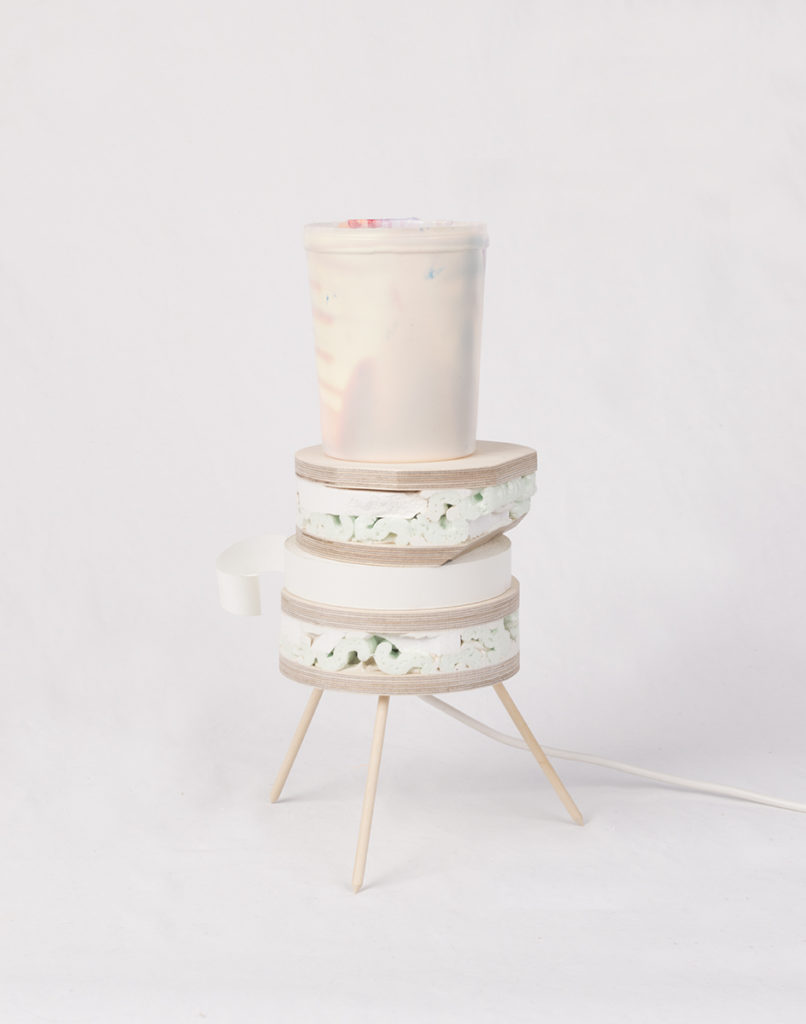
Maggie Wong makes art, writes about art, writes art, reads art, shares art, mentors artists, and is mentored by artists. She studies. Maggie Wong holds an MFA from the School of the Art Institute of Chicago where she now works as a lecturer. Additionally, she is the Associate Director of Iceberg Projects in Rogers Park. Maggie Wong is from Oakland, CA, and now resides in Chicago. Maggie Wong will have images and more text for you soon. 2021-2006 (a fly by)
You and I
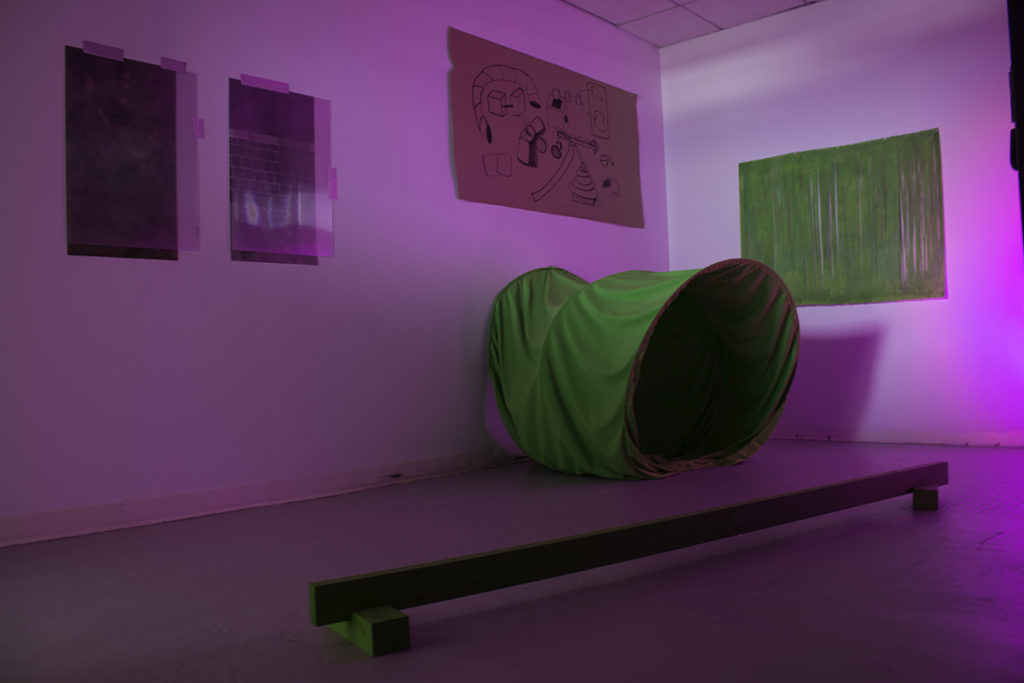
You and I (2016) comprise objects conceived from my memories of playing with my autistic sister. The remakes are scaled to adult size, made from fabric and wood, and painted chroma-key green. When we were children, the toys had simultaneous functions – a tunnel was a place for us to hide from “the monster” while building my sister’s strength and sense of space. I continue to use a doubleness, where cultures are not only suggestions of family members but where the operations of mental and physical play toy with sentimentality.